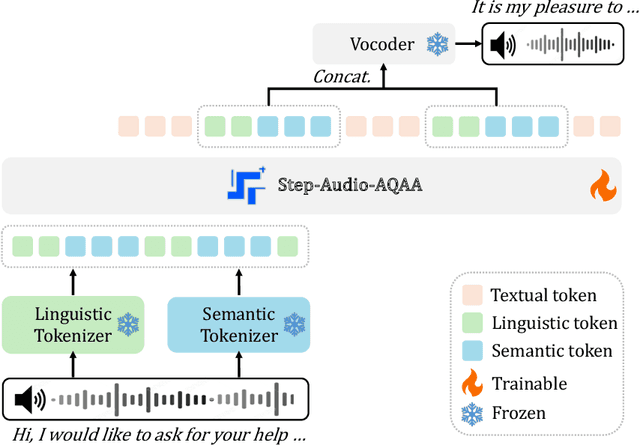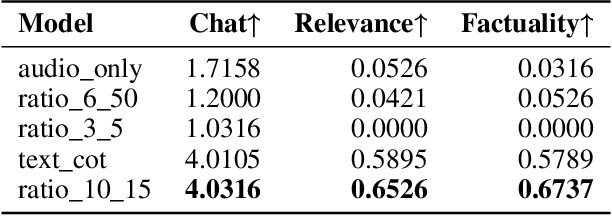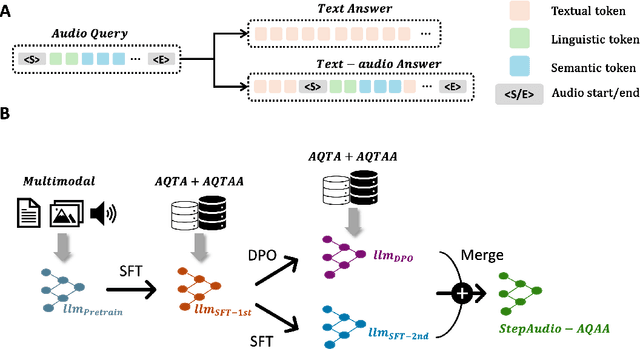Jing Li
A Clinical-grade Universal Foundation Model for Intraoperative Pathology
Oct 06, 2025Abstract:Intraoperative pathology is pivotal to precision surgery, yet its clinical impact is constrained by diagnostic complexity and the limited availability of high-quality frozen-section data. While computational pathology has made significant strides, the lack of large-scale, prospective validation has impeded its routine adoption in surgical workflows. Here, we introduce CRISP, a clinical-grade foundation model developed on over 100,000 frozen sections from eight medical centers, specifically designed to provide Clinical-grade Robust Intraoperative Support for Pathology (CRISP). CRISP was comprehensively evaluated on more than 15,000 intraoperative slides across nearly 100 retrospective diagnostic tasks, including benign-malignant discrimination, key intraoperative decision-making, and pan-cancer detection, etc. The model demonstrated robust generalization across diverse institutions, tumor types, and anatomical sites-including previously unseen sites and rare cancers. In a prospective cohort of over 2,000 patients, CRISP sustained high diagnostic accuracy under real-world conditions, directly informing surgical decisions in 92.6% of cases. Human-AI collaboration further reduced diagnostic workload by 35%, avoided 105 ancillary tests and enhanced detection of micrometastases with 87.5% accuracy. Together, these findings position CRISP as a clinical-grade paradigm for AI-driven intraoperative pathology, bridging computational advances with surgical precision and accelerating the translation of artificial intelligence into routine clinical practice.
Hunyuan3D Studio: End-to-End AI Pipeline for Game-Ready 3D Asset Generation
Sep 16, 2025



Abstract:The creation of high-quality 3D assets, a cornerstone of modern game development, has long been characterized by labor-intensive and specialized workflows. This paper presents Hunyuan3D Studio, an end-to-end AI-powered content creation platform designed to revolutionize the game production pipeline by automating and streamlining the generation of game-ready 3D assets. At its core, Hunyuan3D Studio integrates a suite of advanced neural modules (such as Part-level 3D Generation, Polygon Generation, Semantic UV, etc.) into a cohesive and user-friendly system. This unified framework allows for the rapid transformation of a single concept image or textual description into a fully-realized, production-quality 3D model complete with optimized geometry and high-fidelity PBR textures. We demonstrate that assets generated by Hunyuan3D Studio are not only visually compelling but also adhere to the stringent technical requirements of contemporary game engines, significantly reducing iteration time and lowering the barrier to entry for 3D content creation. By providing a seamless bridge from creative intent to technical asset, Hunyuan3D Studio represents a significant leap forward for AI-assisted workflows in game development and interactive media.
STARE at the Structure: Steering ICL Exemplar Selection with Structural Alignment
Aug 28, 2025Abstract:In-Context Learning (ICL) has become a powerful paradigm that enables LLMs to perform a wide range of tasks without task-specific fine-tuning. However, the effectiveness of ICL heavily depends on the quality of exemplar selection. In particular, for structured prediction tasks such as semantic parsing, existing ICL selection strategies often overlook structural alignment, leading to suboptimal performance and poor generalization. To address this issue, we propose a novel two-stage exemplar selection strategy that achieves a strong balance between efficiency, generalizability, and performance. First, we fine-tune a BERT-based retriever using structure-aware supervision, guiding it to select exemplars that are both semantically relevant and structurally aligned. Then, we enhance the retriever with a plug-in module, which amplifies syntactically meaningful information in the hidden representations. This plug-in is model-agnostic, requires minimal overhead, and can be seamlessly integrated into existing pipelines. Experiments on four benchmarks spanning three semantic parsing tasks demonstrate that our method consistently outperforms existing baselines with multiple recent LLMs as inference-time models.
GRASP: Geospatial pixel Reasoning viA Structured Policy learning
Aug 23, 2025Abstract:Geospatial pixel reasoning is a nascent remote-sensing task that aims to generate segmentation masks directly from natural-language instructions. Prevailing MLLM-based systems co-train a language model and a mask decoder with dense pixel supervision, which is expensive and often weak on out-of-domain (OOD) data. We introduce GRASP, a structured policy-learning framework. In our design, a multimodal large language model first emits task-relevant bounding boxes and positive points from a vision-language instruction. These outputs are then passed to a pre-trained segmentation model, which consumes them as prompts to generate the final mask. Instead of supervised fine-tuning, we optimize the system purely with reinforcement learning: the model is trained solely with GRPO, guided by format rewards and accuracy rewards computed on boxes and points (no mask supervision). This leverages strong priors in foundation models, minimizes trainable parameters, and enables learning from inexpensive annotations. We additionally curate GRASP-1k, which contains reasoning-intensive queries, detailed reasoning traces, and fine-grained segmentation annotations. Evaluations on both in-domain and out-of-domain test sets show state-of-the-art results: about 4% improvement in-domain and up to 54% on OOD benchmarks. The experiment results evidence our model's robust generalization and demonstrate that complex geospatial segmentation behaviors can be learned via RL from weak spatial cues. Code and the dataset will be released open-source.
GLM-4.5: Agentic, Reasoning, and Coding (ARC) Foundation Models
Aug 08, 2025Abstract:We present GLM-4.5, an open-source Mixture-of-Experts (MoE) large language model with 355B total parameters and 32B activated parameters, featuring a hybrid reasoning method that supports both thinking and direct response modes. Through multi-stage training on 23T tokens and comprehensive post-training with expert model iteration and reinforcement learning, GLM-4.5 achieves strong performance across agentic, reasoning, and coding (ARC) tasks, scoring 70.1% on TAU-Bench, 91.0% on AIME 24, and 64.2% on SWE-bench Verified. With much fewer parameters than several competitors, GLM-4.5 ranks 3rd overall among all evaluated models and 2nd on agentic benchmarks. We release both GLM-4.5 (355B parameters) and a compact version, GLM-4.5-Air (106B parameters), to advance research in reasoning and agentic AI systems. Code, models, and more information are available at https://github.com/zai-org/GLM-4.5.
Step-Audio 2 Technical Report
Jul 24, 2025Abstract:This paper presents Step-Audio 2, an end-to-end multi-modal large language model designed for industry-strength audio understanding and speech conversation. By integrating a latent audio encoder and reasoning-centric reinforcement learning (RL), Step-Audio 2 achieves promising performance in automatic speech recognition (ASR) and audio understanding. To facilitate genuine end-to-end speech conversation, Step-Audio 2 incorporates the generation of discrete audio tokens into language modeling, significantly enhancing its responsiveness to paralinguistic information such as speaking styles and emotions. To effectively leverage the rich textual and acoustic knowledge in real-world data, Step-Audio 2 integrates retrieval-augmented generation (RAG) and is able to call external tools such as web search to mitigate hallucination and audio search to switch timbres. Trained on millions of hours of speech and audio data, Step-Audio 2 delivers intelligence and expressiveness across diverse conversational scenarios. Evaluation results demonstrate that Step-Audio 2 achieves state-of-the-art performance on various audio understanding and conversational benchmarks compared to other open-source and commercial solutions. Please visit https://github.com/stepfun-ai/Step-Audio2 for more information.
System Report for CCL25-Eval Task 10: SRAG-MAV for Fine-Grained Chinese Hate Speech Recognition
Jul 24, 2025Abstract:This paper presents our system for CCL25-Eval Task 10, addressing Fine-Grained Chinese Hate Speech Recognition (FGCHSR). We propose a novel SRAG-MAV framework that synergistically integrates task reformulation(TR), Self-Retrieval-Augmented Generation (SRAG), and Multi-Round Accumulative Voting (MAV). Our method reformulates the quadruplet extraction task into triplet extraction, uses dynamic retrieval from the training set to create contextual prompts, and applies multi-round inference with voting to improve output stability and performance. Our system, based on the Qwen2.5-7B model, achieves a Hard Score of 26.66, a Soft Score of 48.35, and an Average Score of 37.505 on the STATE ToxiCN dataset, significantly outperforming baselines such as GPT-4o (Average Score 15.63) and fine-tuned Qwen2.5-7B (Average Score 35.365). The code is available at https://github.com/king-wang123/CCL25-SRAG-MAV.
MedMoE: Modality-Specialized Mixture of Experts for Medical Vision-Language Understanding
Jun 11, 2025Abstract:Different medical imaging modalities capture diagnostic information at varying spatial resolutions, from coarse global patterns to fine-grained localized structures. However, most existing vision-language frameworks in the medical domain apply a uniform strategy for local feature extraction, overlooking the modality-specific demands. In this work, we present MedMoE, a modular and extensible vision-language processing framework that dynamically adapts visual representation based on the diagnostic context. MedMoE incorporates a Mixture-of-Experts (MoE) module conditioned on the report type, which routes multi-scale image features through specialized expert branches trained to capture modality-specific visual semantics. These experts operate over feature pyramids derived from a Swin Transformer backbone, enabling spatially adaptive attention to clinically relevant regions. This framework produces localized visual representations aligned with textual descriptions, without requiring modality-specific supervision at inference. Empirical results on diverse medical benchmarks demonstrate that MedMoE improves alignment and retrieval performance across imaging modalities, underscoring the value of modality-specialized visual representations in clinical vision-language systems.
Step-Audio-AQAA: a Fully End-to-End Expressive Large Audio Language Model
Jun 10, 2025



Abstract:Large Audio-Language Models (LALMs) have significantly advanced intelligent human-computer interaction, yet their reliance on text-based outputs limits their ability to generate natural speech responses directly, hindering seamless audio interactions. To address this, we introduce Step-Audio-AQAA, a fully end-to-end LALM designed for Audio Query-Audio Answer (AQAA) tasks. The model integrates a dual-codebook audio tokenizer for linguistic and semantic feature extraction, a 130-billion-parameter backbone LLM and a neural vocoder for high-fidelity speech synthesis. Our post-training approach employs interleaved token-output of text and audio to enhance semantic coherence and combines Direct Preference Optimization (DPO) with model merge to improve performance. Evaluations on the StepEval-Audio-360 benchmark demonstrate that Step-Audio-AQAA excels especially in speech control, outperforming the state-of-art LALMs in key areas. This work contributes a promising solution for end-to-end LALMs and highlights the critical role of token-based vocoder in enhancing overall performance for AQAA tasks.
LaF-GRPO: In-Situ Navigation Instruction Generation for the Visually Impaired via GRPO with LLM-as-Follower Reward
Jun 04, 2025Abstract:Navigation instruction generation for visually impaired (VI) individuals (NIG-VI) is critical yet relatively underexplored. This study, hence, focuses on producing precise, in-situ, step-by-step navigation instructions that are practically usable by VI users. Concretely, we propose LaF-GRPO (LLM-as-Follower GRPO), where an LLM simulates VI user responses to generate rewards guiding the Vision-Language Model (VLM) post-training. This enhances instruction usability while reducing costly real-world data needs. To facilitate training and testing, we introduce NIG4VI, a 27k-sample open-sourced benchmark. It provides diverse navigation scenarios with accurate spatial coordinates, supporting detailed, open-ended in-situ instruction generation. Experiments on NIG4VI show the effectiveness of LaF-GRPO by quantitative metrics (e.g., Zero-(LaF-GRPO) boosts BLEU +14\%; SFT+(LaF-GRPO) METEOR 0.542 vs. GPT-4o's 0.323) and yields more intuitive, safer instructions. Code and benchmark are available at \href{https://github.com/YiyiyiZhao/NIG4VI}{https://github.com/YiyiyiZhao/NIG4VI}.
 Add to Chrome
Add to Chrome Add to Firefox
Add to Firefox Add to Edge
Add to Edge